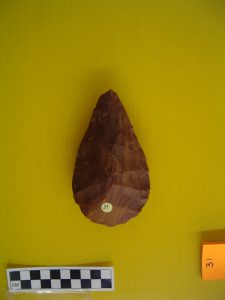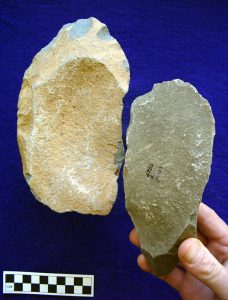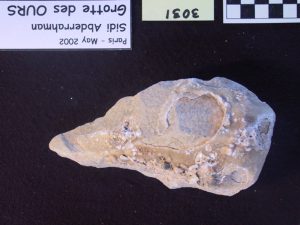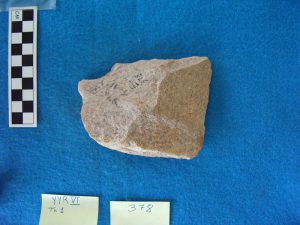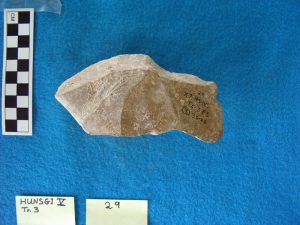Defenition distinct segment in the Acheulian techno-complex that is technologically and typologically distinguishable from others. When LFA assemblages from a very wide geographical and even chronological range are grouped together, there is a striking degree of resemblance that warrants defining these assemblages as an Acheulian stage, characterized by the following criteria (Sharon 2007):
- The primary lithic technology for manufacturing bifaces in these assemblages was the production of large flakes from giant cores. Other types of blanks were infrequently used.
- Acheulian hominins applied a large variety of systematic, well planned and predetermined core methods in the production of large flakes (Sharon, 2009), all well adapted to the type and shape of the raw material at hand (Sharon, 2008).
- A general propensity toward the production of large flakes from coarse-grained rock types rather than from fine-grained raw materials was observed in the LFA industries. Acheulian knappers of large flakes possessed the ability to produce large flakes from flint, obsidian, hornfels and similar fine-grained rocks, which were available in the vicinity of many of the sites. However, they preferred to use such rocks as basalt, dolorite and quartzite in the production of bifaces (Sharon, 2008). There are some assemblages in which fine-grained rocks were the primary raw material for the production of large flakes (e.g. Gowlett, 1980), but these are exceptions.
- The study of biface size supports the definition of a large flake as one exceeding 10 cm in maximal length (Kleindienst, 1962). LFA assemblages frequently include large, un-retouched flakes, among which cleaver-shaped flakes are the most notable group (Sharon 2007).
- In LFA assemblages, most handaxes and cleavers were shaped with minimal retouch of the ventral face. The main feature of this shaping procedure was thinning the flake blank’s bulb of percussion, a technological trait that distinguished LFA tools from other Acheulian industries. In the latter, handaxes were also frequently produced on flake blanks, but final tool shaping involved a much higher intensity of retouch on both faces of the tool. The ability to predetermine blank shape prior to its detachment from the parent giant core, and the knowledge that guided the blank selection process, enabled the makers of large flakes to produce blanks of desirable shape that needed almost no additional shaping work. This efficient and sophisticated strategy is one of the main characteristics of the LFA. Additionally, it should be noted that in all of the assemblages under study, handaxes were frequently more heavily retouched than cleavers, mainly by means of more extensive retouch of the ventral face.
- LFA assemblages contain significant frequencies of ‘‘true’’ cleavers, i.e. made on flakes, with an unmodified cutting edge (Tixier, 1956), although it is impossible to establish a rigid frequency threshold at this time. Indeed, Acheulian sites that are not a part of the LFA industry, rarely have more than 1% of ‘‘true’’ cleavers among their bifaces. Even if bifacial cleavers are included in the count, the total number of cleavers rarely exceeds 3% of these assemblages (Gilead, 1973; Ranov, 2001; Mourre, 2003; White, 2006).
- Broad-tipped ovate handaxes are rare in LFA assemblages. The great majority of handaxes in these sites have pointed tips. A cleaver vs. ovate handaxe dichotomy rule is suggested, maintaining that these tool types comprised different solutions to a similar functional need for a wide, sharp and thin cutting edge. The choice between these tools seems to have been rooted in traditional lithic preferences, sites being dominated by either one or the other.7
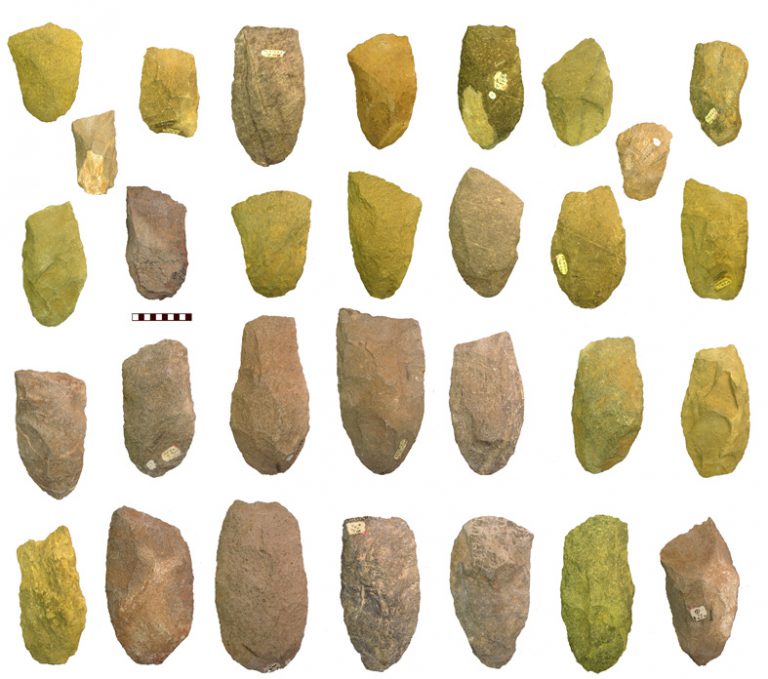
Pictures of tools from Acheulian sites studied as part of the Large Flake Acheulian project are available on request at
Based on:
Methodology
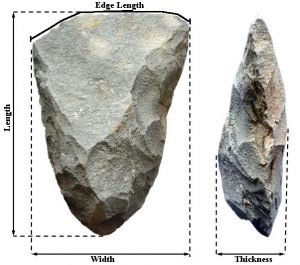
The methodology used during the analysis as well as the terminology and definitions are detailed here
A set of metric and technological attributes was used in the analysis of the tools. General typological classification included:
handaxes – List of attributes
Cleavers – List of attributes
